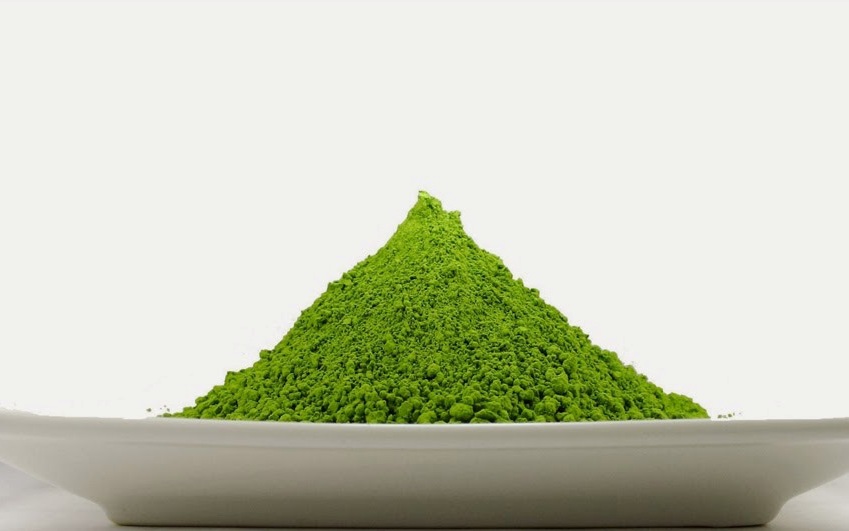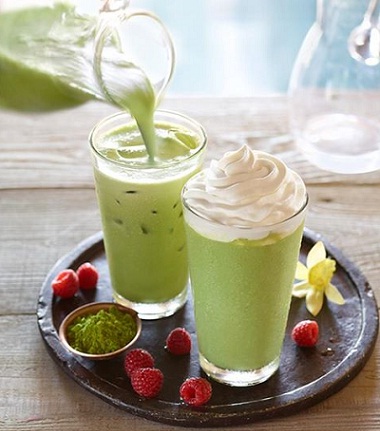Coffee & Life
Matcha and Things You Might Not Know
Matcha (Japanese: 抹茶, “powdered tea”) is the most fascinating rediscovery of the 21st century in the tea industry. Matcha was used by monks over 800 years ago as tea during meditation and is now considered the finest and most valuable type of tea in Japan.
Many consumers today are turning to this tea, and even the food industry is increasingly incorporating Matcha into green tea-flavored products! Ice cream manufacturers, chocolate makers, and renowned chefs are now creating matcha ice cream, matcha truffle mushrooms, and matcha chocolate…

History
Tea is a very classic beverage with a history of over 5,000 years. The method of drinking tea is believed to have originated around 2500 BC. By the 7th century, tea had become beloved throughout China.
Similarly, Matcha had been used by monks for a long time. Tea was originally regarded as a kind of medicine. To absorb all the medicinal properties of the tea, instead of using whole leaves like other herbs, people ground the leaves into a fine powder! And from there, Matcha was invented.
In 1191, a Zen master named Eisai brought this new method of drinking tea from China to Japan. Eisai traveled throughout the country and planted tea wherever he went. In his book “Kissa Yojoki”, he wrote: “Tea is a miraculous medicine to maintain health. Tea has the power to prolong life. In places where tea is cultivated, people live longer.” Since then, Matcha was considered a precious medicinal secret of the imperial court and spiritual masters.
In the 16th century, another Zen master, Sen-no-Rikyu, significantly influenced the history of tea drinking in Japan. He created a new way of drinking tea that left a profound impression on the West’s perception of Japan. The type of tea used in this method was Matcha.
Through this tea ceremony, Matcha gained importance among the Samurai class. For 750 years, Matcha maintained its status as a secret tea of Japan’s elite class.

How to Drink Matcha Tea
Matcha has great benefits for both body and mind. It stimulates alertness, calms the mind, and reduces stress.
The flavor of matcha is pleasant and mild, yet strong and fragrant. Matcha is considered the espresso of teas. The tea bowl should never be filled to the brim but only about two fingers’ height. Those who have tried whisking matcha with a bamboo brush to create foam will feel the essence of the Japanese tea ceremony within it. The gentle clacking sound of the bamboo whisk stirring the tea, the aroma slowly rising, awakens all the senses.
Matcha evokes many sensations, first and foremost a fresh, pure, and clear fragrance. Mindful appreciation of matcha means loosening the constraints of smell and taste to enjoy completely new impressions. To truly understand matcha’s flavor, one needs to drink three bowls! The first bowl opens a new world, the original, natural source of the tea; the second bowl inspires daydreaming, reflection, and philosophy; and the third teaches us how to organize, identify, evaluate, and remember its flavors.
Matcha tea has a deep green color, a slightly sweet and very pleasant finish. If you taste a tea that is not green and is bitter, then discard it—it is not authentic matcha powder!
Quality
Like other teas in the world, matcha is also categorized into different quality grades. Depending on the growing region, location, altitude (lowland, mountainous, or hilly areas), and the expertise of the grower, different qualities of Tencha tea are produced.
After being ground in a stone mill, the product quality varies significantly. There are three criteria to distinguish quality: aroma, color, and the compounds contained in the tea.
Aroma
High-quality matcha is sweet, creamy like whipped cream, mild, and only slightly astringent. The sweetness comes from a high concentration of amino acids, especially L-Theanine and types of fibers.
Compared to lower-quality or fake matcha powders: simple green tea powder contains no amino acids, has a very prominent astringent taste, and produces an unpleasant sensation when drinking. The bitterness is mainly from these fake tea powders.
Color
Matcha has a bright jade green color. Regular green tea powder is more yellow-green. This difference comes from the raw material. To produce matcha powder, only Tencha tea leaves are used. Tencha is shaded and protected from sunlight for a long time before harvest, resulting in a very deep green color. Matcha is ground in granite stone mills into a very fine powder. The powder particles measure from 5 to 17 micrometers—so fine that it can be felt neither by hand nor tongue!
Unlike matcha, other green tea powders are often not shaded before harvest or only for a short period. They use everything from leaves, stems, to veins in processing. These teas are ground by machines and cannot achieve the fine texture of stone-ground matcha. This inferior tea powder feels coarse to the touch and gritty on the tongue.
Collected.







